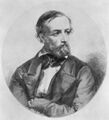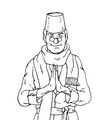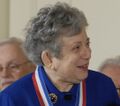Template:Selected anniversaries/February 13: Difference between revisions
No edit summary |
No edit summary |
||
| Line 16: | Line 16: | ||
File:Peter Gustav Lejeune Dirichlet.jpg|link=Peter Gustav Lejeune Dirichlet (nonfiction)|1805: Mathematician [[Peter Gustav Lejeune Dirichlet (nonfiction)|Peter Gustav Lejeune Dirichlet]] born. He will important make contributions to number theory, analysis, and mechanics. Dirichlet will be one of the first mathematicians to give the modern formal definition of a function. | File:Peter Gustav Lejeune Dirichlet.jpg|link=Peter Gustav Lejeune Dirichlet (nonfiction)|1805: Mathematician [[Peter Gustav Lejeune Dirichlet (nonfiction)|Peter Gustav Lejeune Dirichlet]] born. He will important make contributions to number theory, analysis, and mechanics. Dirichlet will be one of the first mathematicians to give the modern formal definition of a function. | ||
||John Louis Emil Dreyer | ||1852: John Louis Emil Dreyer born ... astronomer. | ||
File:Niles Cartouchian 2.jpg|link=Niles Cartouchian (1900s)|1835: Mathematician, scholar, and crime-fighter [[Niles Cartouchian (1900s)|Niles Cartouchian]] helps mathematician Peter Dirichlet break up [[math crime]] gang. | File:Niles Cartouchian 2.jpg|link=Niles Cartouchian (1900s)|1835: Mathematician, scholar, and crime-fighter [[Niles Cartouchian (1900s)|Niles Cartouchian]] helps mathematician Peter Dirichlet break up [[math crime]] gang. | ||
||Dugald Caleb Jackson | ||1865: Dugald Caleb Jackson born ... electrical engineer. He received the IEEE Edison Medal for "outstanding and inspiring leadership in engineering education and in the field of generation and distribution of electric power". | ||
||1880 | ||1880: Thomas Edison observes the Edison effect. | ||
||1900: Abraham Plessner born ... mathematician. He published a paper containing what is now called Plessner's theorem, concerning the boundary behavior of functions meromorphic in the unit disk. Pic: https://www.geni.com/people/Abraham-E-Plessner/6000000000601380840 | |||
||Magnus Rudolph Hestenes (b. February 13, 1906) was an American mathematician. Together with Cornelius Lanczos and Eduard Stiefel, he invented the conjugate gradient method. Pic. | ||Magnus Rudolph Hestenes (b. February 13, 1906) was an American mathematician. Together with Cornelius Lanczos and Eduard Stiefel, he invented the conjugate gradient method. Pic. | ||
| Line 30: | Line 32: | ||
File:David Hilbert.jpg|link=David Hilbert (nonfiction)|1911: Mathematician and crime-fighter [[David Hilbert (nonfiction)|David Hilbert]] publishes new synthesis of invariant theory and the axiomatization of geometry which detects and prevents [[crimes against mathematical constants]]. | File:David Hilbert.jpg|link=David Hilbert (nonfiction)|1911: Mathematician and crime-fighter [[David Hilbert (nonfiction)|David Hilbert]] publishes new synthesis of invariant theory and the axiomatization of geometry which detects and prevents [[crimes against mathematical constants]]. | ||
||William Aaron Nierenberg | ||1919: William Aaron Nierenberg born ... physicist who worked on the Manhattan Project and was director of the Scripps Institution of Oceanography from 1965 through 1986. Pic. | ||
||1923 | ||1923: Chuck Yeager born ... American general and pilot; first test pilot to break the sound barrier | ||
File:Fay Ajzenberg-Selove.jpg|link=Fay Ajzenberg-Selove (nonfiction)|1926: Nuclear physicist [[Fay Ajzenberg-Selove (nonfiction)|Fay Ajzenberg-Selove]] born. She will do important experimental work in nuclear spectroscopy of light elements, authoring annual reviews of the energy levels of light atomic nuclei. | File:Fay Ajzenberg-Selove.jpg|link=Fay Ajzenberg-Selove (nonfiction)|1926: Nuclear physicist [[Fay Ajzenberg-Selove (nonfiction)|Fay Ajzenberg-Selove]] born. She will do important experimental work in nuclear spectroscopy of light elements, authoring annual reviews of the energy levels of light atomic nuclei. | ||
| Line 38: | Line 40: | ||
File:Karl Jansky.jpg|link=Karl Guthe Jansky (nonfiction)|1933: Physicist and engineer [[Karl Guthe Jansky (nonfiction)|Karl Guthe Jansky]] uses radio astronomy antenna to detect and prevent [[crimes against astronomical constants]]. | File:Karl Jansky.jpg|link=Karl Guthe Jansky (nonfiction)|1933: Physicist and engineer [[Karl Guthe Jansky (nonfiction)|Karl Guthe Jansky]] uses radio astronomy antenna to detect and prevent [[crimes against astronomical constants]]. | ||
||Erich Hecke | ||1947: Erich Hecke dies ... mathematician. Pic. | ||
|File:800px-Nebra_Schwerter.jpg|link=Weapon (nonfiction)|1955: Army research laboratories [[Weapon (nonfiction)|convert modern plowshares into ancient swords]], revealing new class of [[crimes against mathematical constants]]. | |File:800px-Nebra_Schwerter.jpg|link=Weapon (nonfiction)|1955: Army research laboratories [[Weapon (nonfiction)|convert modern plowshares into ancient swords]], revealing new class of [[crimes against mathematical constants]]. | ||
| Line 54: | Line 56: | ||
||Marian Adam Rejewski (d. 13 February 1980) was a Polish mathematician and cryptologist who reconstructed the Nazi German military Enigma cipher machine sight-unseen in 1932. The cryptologic achievements of Rejewski and colleagues Jerzy Różycki and Henryk Zygalski enabled the British to begin reading German Enigma-encrypted messages at the start of World War II. Pic. | ||Marian Adam Rejewski (d. 13 February 1980) was a Polish mathematician and cryptologist who reconstructed the Nazi German military Enigma cipher machine sight-unseen in 1932. The cryptologic achievements of Rejewski and colleagues Jerzy Różycki and Henryk Zygalski enabled the British to begin reading German Enigma-encrypted messages at the start of World War II. Pic. | ||
||1992 | ||1992: Nikolay Bogolyubov dies ... mathematician and physicist. Pic. His method of teaching, based on creation of a warm atmosphere, politeness and kindness, is famous in Russia and is known as the "Bogoliubov approach". | ||
||1997 | ||1997: Robert Klark Graham dies ... eugenicist and businessman (b. 1906) | ||
||1997 | ||1997: Mark Krasnosel'skii dies ... mathematician and academic (b. 1920) | ||
|File:Sir Tony Hoare 2011.jpg|link=Tony Hoare (nonfiction)|1997: Computer scientist and crime-fighter [[Tony Hoare (nonfiction)|Tony Hoare]] publishes new class of [[Gnomon algorithm functions]] which detect and prevent [[crimes against mathematical constants]]. | |File:Sir Tony Hoare 2011.jpg|link=Tony Hoare (nonfiction)|1997: Computer scientist and crime-fighter [[Tony Hoare (nonfiction)|Tony Hoare]] publishes new class of [[Gnomon algorithm functions]] which detect and prevent [[crimes against mathematical constants]]. | ||
||Ugo Fano | ||2001: Ugo Fano dies ... physicist. He will have a major impact in sustained work over six decades on atomic physics and molecular physics, and earlier on radiological physics. Phenomena named after him will include the Fano resonance profile, the Fano factor, the Fano effect. Pic. | ||
||2004 | ||2004: The Harvard–Smithsonian Center for Astrophysics announces the discovery of the universe's largest known diamond, white dwarf star BPM 37093. Astronomers named this star "Lucy" after The Beatles' song "Lucy in the Sky with Diamonds". | ||
||2012 | ||2012: The European Space Agency (ESA) conducted the first launch of the European Vega rocket from Europe's spaceport in Kourou, French Guiana. | ||
||Sir Erik Christopher Zeeman FRS | ||2016: Sir Erik Christopher Zeeman FRS dies ... mathematician, known for his work in geometric topology and singularity theory. | ||
File:Pale Blue Dot.png|link=Pale Blue Dot (nonfiction)|2017: Steganographic analysis of the famous ''[[Pale Blue Dot (nonfiction)|Pale Blue Dot]]'' photograph unexpectedly reveals "nearly a terabyte" of encrypted data. | File:Pale Blue Dot.png|link=Pale Blue Dot (nonfiction)|2017: Steganographic analysis of the famous ''[[Pale Blue Dot (nonfiction)|Pale Blue Dot]]'' photograph unexpectedly reveals "nearly a terabyte" of encrypted data. | ||
</gallery> | </gallery> | ||
Revision as of 12:48, 21 August 2018
1787: Polymath Roger Joseph Boscovich dies. He was a physicist, astronomer, mathematician, philosopher, diplomat, poet, theologian, and Jesuit priest.
1805: Mathematician Peter Gustav Lejeune Dirichlet born. He will important make contributions to number theory, analysis, and mechanics. Dirichlet will be one of the first mathematicians to give the modern formal definition of a function.
1835: Mathematician, scholar, and crime-fighter Niles Cartouchian helps mathematician Peter Dirichlet break up math crime gang.
1910: Physicist and inventor William Shockley born. He will share the 1956 Nobel Prize in Physics for the invention of the point-contact transistor.
1911: Mathematician and crime-fighter David Hilbert publishes new synthesis of invariant theory and the axiomatization of geometry which detects and prevents crimes against mathematical constants.
1926: Nuclear physicist Fay Ajzenberg-Selove born. She will do important experimental work in nuclear spectroscopy of light elements, authoring annual reviews of the energy levels of light atomic nuclei.
1933: Physicist and engineer Karl Guthe Jansky uses radio astronomy antenna to detect and prevent crimes against astronomical constants.
1956: Mathematician and philosopher Jan Łukasiewicz dies. He thought innovatively about traditional propositional logic, the principle of non-contradiction and the law of excluded middle.
2017: Steganographic analysis of the famous Pale Blue Dot photograph unexpectedly reveals "nearly a terabyte" of encrypted data.








